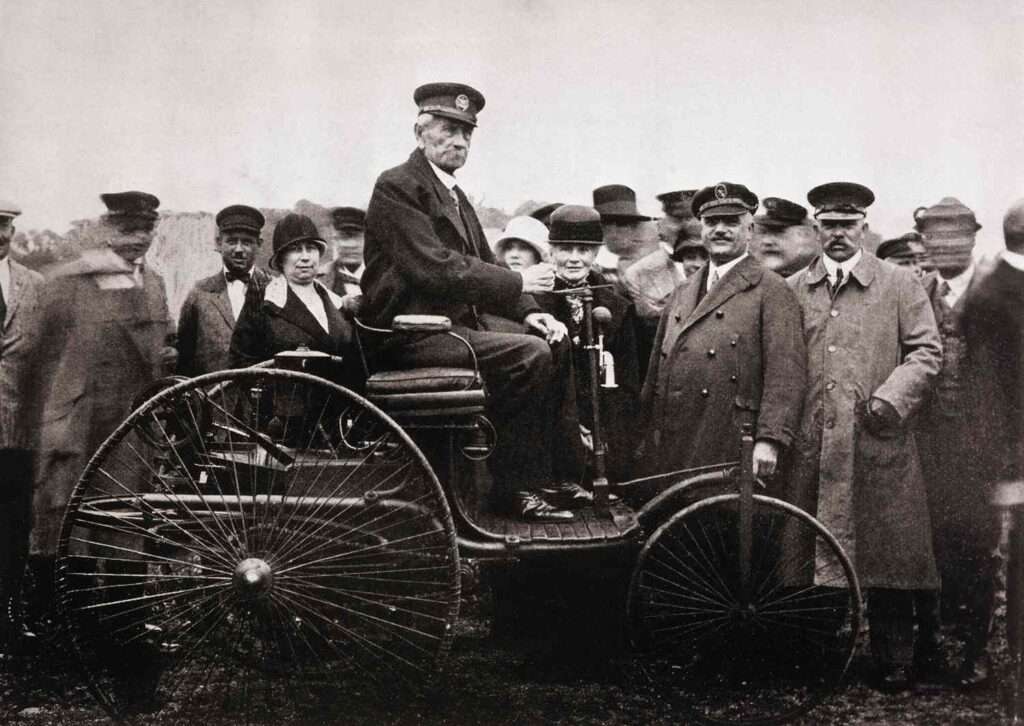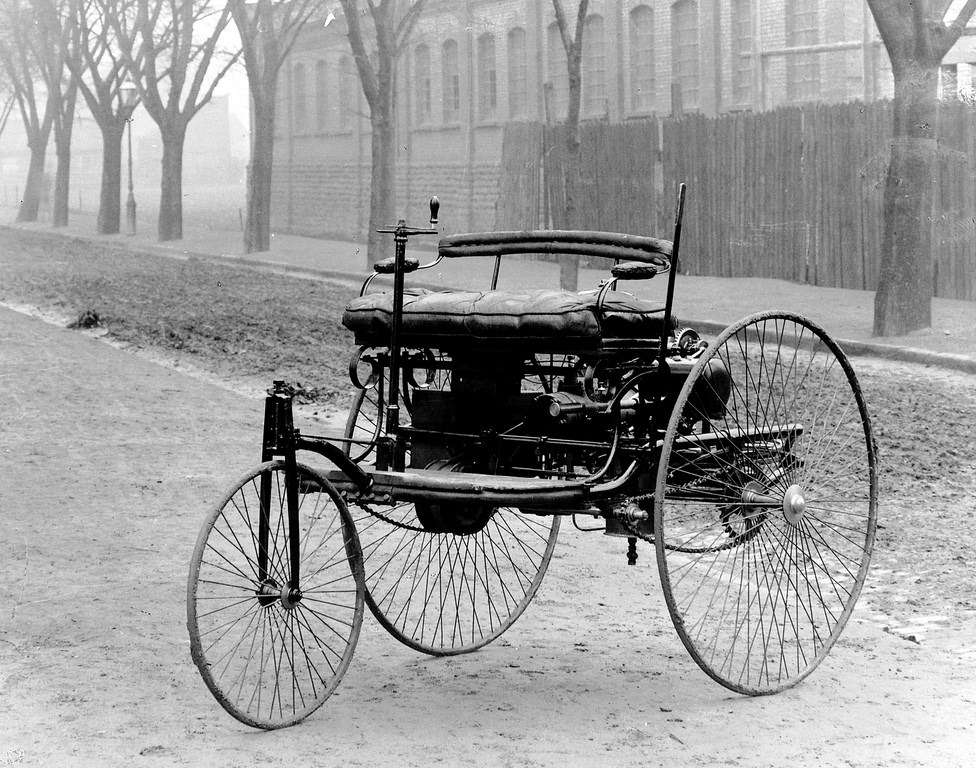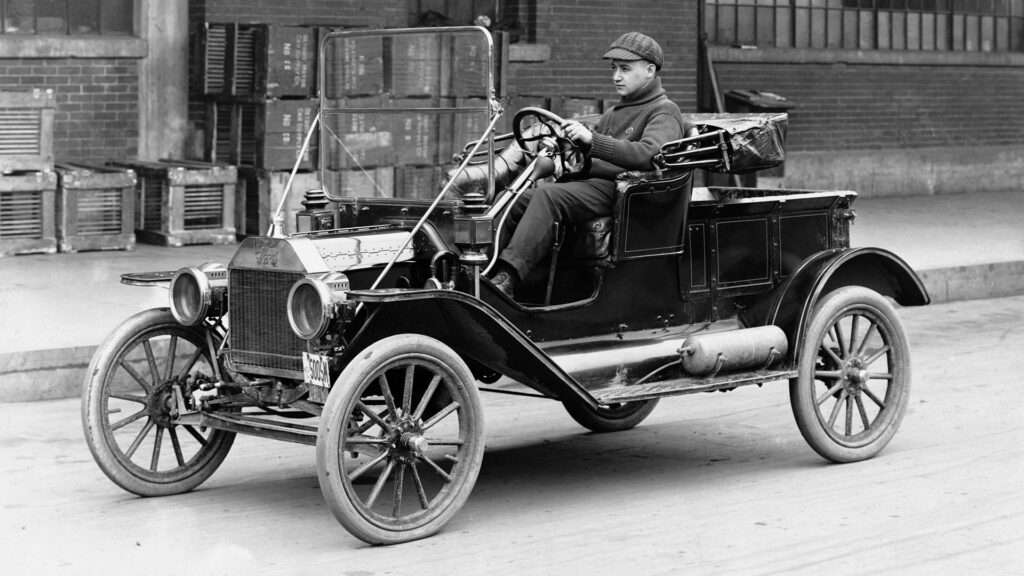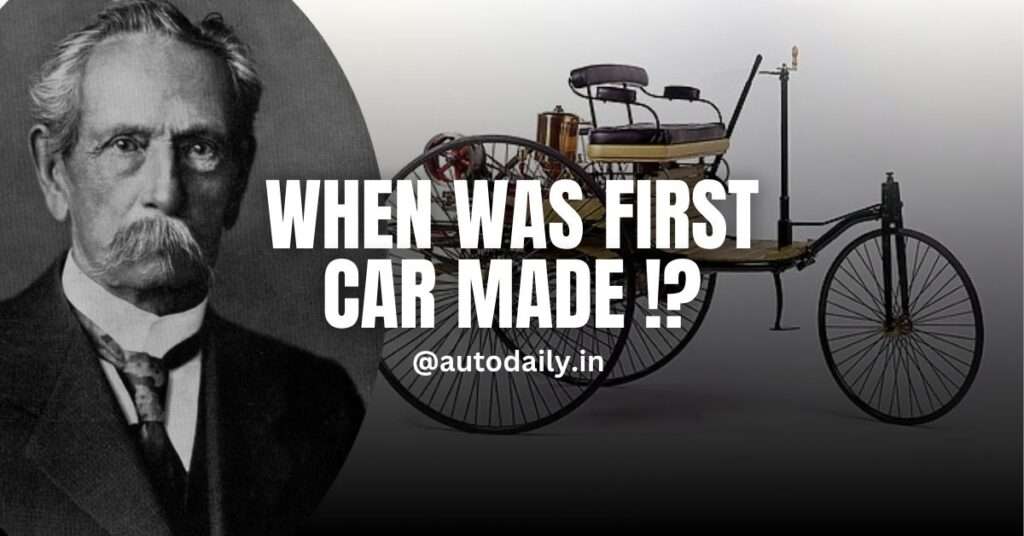The First Automobile
Introduction
Let’s take a trip back to a time when things were just getting started – the 1800s. This was a period of big ideas, especially when it came to moving around. One question that keeps popping up is, “When did the first car come into play?” It’s like opening a door to explore how we got from clunky steam-powered tricycles to the smooth rides we have today.
Think of it as a journey starting with folks trying out steam-powered tricycles. But the real game-changer arrived in the late 1800s – something called the internal combustion engine. In 1885, a German inventor named Karl Benz revealed something special: the Motorwagen. That’s like the great-great-grandparent of the cars we see today.
Early Attempts: Trying Something New

Before the cool cars we know today, people were testing out some pretty interesting ideas. Picture this: way back in 1769, a guy named Nicolas-Joseph Cugnot came up with a steam-powered tricycle. It’s like a bicycle, but with an extra wheel and powered by steam.
Cugnot’s invention was like dipping toes into the water of mechanized transportation. It wasn’t perfect, but it got people thinking – “Hey, maybe we can travel without relying on horses.”
So, when we talk about the pioneers, Cugnot and his steam-powered tricycle deserve a nod. They might not have been the sleek cars we see now, but they were the first steps on the road to the modern automobile. And trust us, the road gets more exciting from here.
Big Change: The Engine that Changed Everything

Now, let’s fast forward a bit to a time when things really started heating up – the late 1800s. Imagine this: engines powered from within, making everything more exciting. This was the birth of the internal combustion engine, a game-changer in the world of transportation.
In 1885, a clever guy named Karl Benz, who lived in Germany, introduced something groundbreaking – the Motorwagen. Forget steam, this baby ran on something called gasoline. It wasn’t just a tricycle; it was like a magic carpet that moved without horses.
So, why is this a big deal? Because Karl Benz’s invention is widely considered the first real car. It’s like the superhero origin story for the automobiles we zip around in today. The internal combustion engine was the spark that ignited a whole new era in travel. Buckle up; the ride’s about to get more fascinating.
The Motorwagen: A Landmark Achievement

Now, let’s zoom in on a real hero in the car story – Karl Benz. Picture this: it’s 1886, and he unveils the Motorwagen. This was no ordinary ride; it was a landmark achievement, like the first time you aced riding a bike without training wheels.
Karl Benz’s Motorwagen was special because it had something called an internal combustion engine. It ran on gasoline, not steam or horse power. It was a three-wheeled wonder, like a magic chariot moving at a whopping 10 miles per hour.
Why was this a big deal? Well, the Motorwagen is like the great-great-grandparent of the cars we cruise in today. It marked the true beginning of the modern automobile era. Karl Benz hit the gas on a journey that changed how we travel and made history on three wheels. Let’s take a spin down memory lane and celebrate this remarkable ride.
Key Features of the Motorwagen
Now, let’s pop open the hood and peek at what made Karl Benz’s Motorwagen tick. This ride wasn’t just about looking fancy; it had some cool features that set the stage for all the cars we adore today.
1. Single-Cylinder Magic: The heart of the Motorwagen was a single-cylinder engine. Think of it as the beating heart of the car, making sure everything kept moving smoothly.
2. Chassis Charm: The body of the Motorwagen wasn’t just for show. It had a chassis – the skeleton that gave it structure. It looked a bit like a carriage but had that touch of modern flair.
3. Three-Wheel Wonder: Forget four wheels; the Motorwagen rolled with just three. This unique setup wasn’t just for style; it provided stability and paved the way for innovative designs in the future.
4. Gasoline Giddy-Up: Unlike its steam-powered predecessors, the Motorwagen ran on gasoline. This was a game-changer, turning it into a speedy, horseless wonder.
5. 10 MPH Thrill: Hold on to your hat – the Motorwagen could hit speeds of 10 miles per hour. Back then, that was like breaking the sound barrier. It might seem slow now, but it was the Ferrari of its time.
These features might sound basic, but they were the building blocks of the automotive revolution. The Motorwagen wasn’t just a ride; it was a glimpse into the future of cars. So, let’s tip our hats to Karl Benz for crafting a masterpiece that rolled us into the exciting world of automobiles.
Mass Production: Ford’s Revolution
Mass Production: Ford’s Revolution

In the early 1900s, Henry Ford revolutionized the automobile industry with the introduction of the Model T and the innovative concept of mass production. The Model T, launched in 1908, became the first car accessible to the average person, thanks to Ford’s assembly line. This assembly line transformed car manufacturing into an efficient, cost-effective process, making cars affordable for everyday families. The Model T wasn’t just a vehicle; it symbolized a shift from luxury to necessity, changing the way people lived and worked. Beyond individual lives, Ford’s mass production strategy had a profound impact on the economy, creating jobs and driving economic growth. Henry Ford’s vision and the Model T marked a pivotal moment in automotive history, democratizing mobility and shaping the modern automobile landscape.
Global Impact: The Automobile’s Rise
In the wake of Henry Ford’s mass production, the automobile’s influence transcended borders, reshaping societies and economies worldwide. As cars became more accessible, cities transformed, and mobility evolved from a luxury to a fundamental aspect of modern life. The global impact of automobiles was profound, fostering economic growth, connecting communities, and providing newfound freedom in travel. The rise of the automobile wasn’t just a local phenomenon but a transformative force that touched every corner of the globe, leaving an indelible mark on the way we live, work, and navigate the world.
Conclusion
the journey from the early days of steam-powered tricycles to the global dominance of automobiles is a testament to human ingenuity and innovation. Karl Benz’s Motorwagen marked the inception, while Henry Ford’s mass production revolutionized accessibility. The evolution from luxury to necessity transformed societies, economies, and the very fabric of daily life.
As we navigate the present and peer into the future, with electric dreams on the horizon, it’s crucial to appreciate the roots of the automotive journey. The automobile’s impact extends far beyond transportation; it’s a symbol of progress, freedom, and interconnectedness. From the Motorwagen’s modest 10 miles per hour to the electric vehicles promising a sustainable tomorrow, the automotive narrative continues to unfold, promising an exciting road ahead. The automobile, in all its forms, remains a driving force in shaping the way we experience the world.
Join Us : WhatsApp Channel
FAQ
The very first self-powered road vehicle was built by Nicolas Joseph Cugnot of France in 1769. It was powered by a steam engine and is recognized by the British Royal Automobile Club and the Automobile Club de France as the first automobile.
The first gas-powered automobile, resembling modern vehicles, was invented by German engineer Karl Benz in 1885. Benz patented the 3-wheeled Motorwagen, powered by an internal combustion engine, which laid the foundation for affordable automobile transportation and led to the creation of the Mercedes-Benz brand.
The first car’s engine was an internal combustion engine. It used the explosive combustion of fuel (such as gasoline, diesel, or kerosene) to push a piston within a cylinder. The piston’s movement turned a crankshaft, which, in turn, powered the car’s wheels via a chain or drive shaft.
The first car invented by Karl Benz ran on gasoline. This marked the beginning of gasoline-powered automobiles, which eventually became the norm for modern cars.
The key features of the first car included:
Gasoline-powered internal combustion engine
Three-wheeled design
Pioneering affordability and practicality for everyday use.
The speed of the first car, the Motorwagen, was relatively modest. It could reach a top speed of around 10 mph.
Other notable pioneers include:
Gottlieb Daimler: Inventor of a practical gasoline-powered vehicle.
Rene Panhard and Emile Levassor: Creators of the first series-produced cars.
Charles and Frank Duryea: Builders of the first successful American gasoline-powered car.
Henry Ford: Revolutionized automobile production with assembly line techniques.
The invention of the first car transformed transportation, enabling faster travel, economic growth, and increased mobility. It laid the groundwork for the automotive industry we know today.

